
Salmon and steelhead populations across the eastern Pacific Ocean have been heavily affected in recent years because of several factors. These factors mainly include loss of habitat or access to that habitat.
In some cases, streams and creeks that would otherwise provide spawning grounds have dried up, or need more flow to support the species. In other cases, the waters are blocked entirely by man-made structures.
Marsh Creek isn’t an exception to these situations. It’s been quite some time since salmon or steelhead made their way up the creek to reproduce in large numbers.
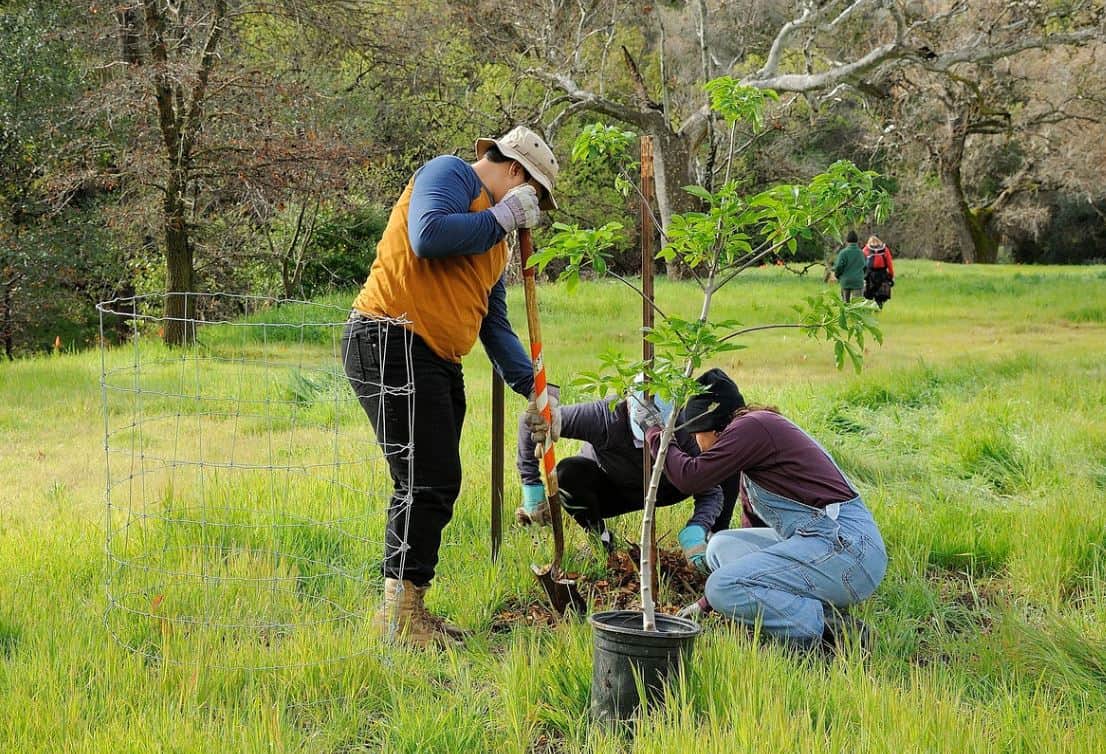
Floodplain restoration at Save Mount Diablo’s Big Bend property. Photo by Al Johnson
That said, Marsh Creek is one of the least disturbed streams in Contra Costa County. If salmon and steelhead are to recover, this is a place worthy of our collective restoration efforts.
Save Mount Diablo and its partners have already protected nearly half of the second-largest creek in the county, and have made huge strides in protecting and reassembling much of the Marsh Creek watershed.
But there’s more work to be done.
A Brief Background of Marsh Creek

John Marsh is the namesake of Marsh Creek. Photo courtesy Online Archive of California
Marsh Creek was named after the settler, John Marsh, and stretches about 33 miles from its headwaters at the eastern side of Mount Diablo. Its watershed is about 100 square miles.
According to American Rivers, it’s the first estuary migratory fish like salmonids encounter when working their way into the Sacramento–San Joaquin Delta.
In the 1950s, flood concerns were paramount, and measures were taken to prevent damage to structures and agricultural lands.
Construction of the Marsh Creek Reservoir finished in the 1960s. The reservoir helped to control the creek’s flow, while concrete channels directed it downstream and into the San Joaquin Delta.
Restoration of Lower Marsh Creek
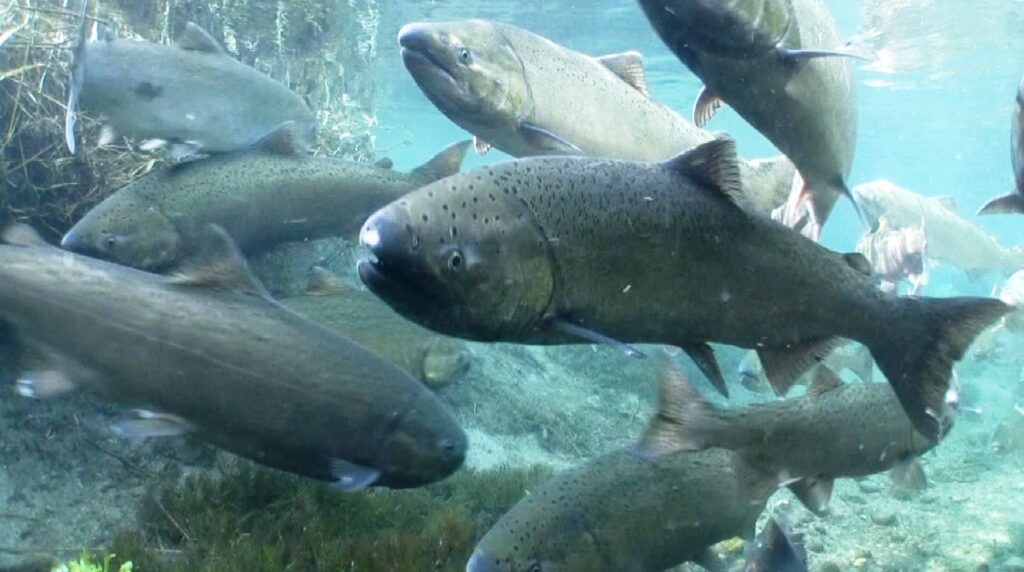
Chinook salmon returning to their ancestral stream. Photo courtesy of Michael Humling, US Fish and Wildlife Service
In the mid-2000s, American Rivers began a campaign to build a fish ladder along the creek in Brentwood to better support the salmon and steelhead.
The ladder cost $400,000 and was completed in 2010. Anadromous fish could then migrate a total of 11 miles from the mouth of Marsh Creek up to the Marsh Creek Reservoir.
The work wasn’t finished yet. With most of the flow going along concrete channels, the fish didn’t have much habitat to lay eggs in.
The work continued with the completion of the Three Creeks project in 2022, which restored almost a mile of riparian habitat along Marsh Creek where it meets up with Deer and Sand Creeks.
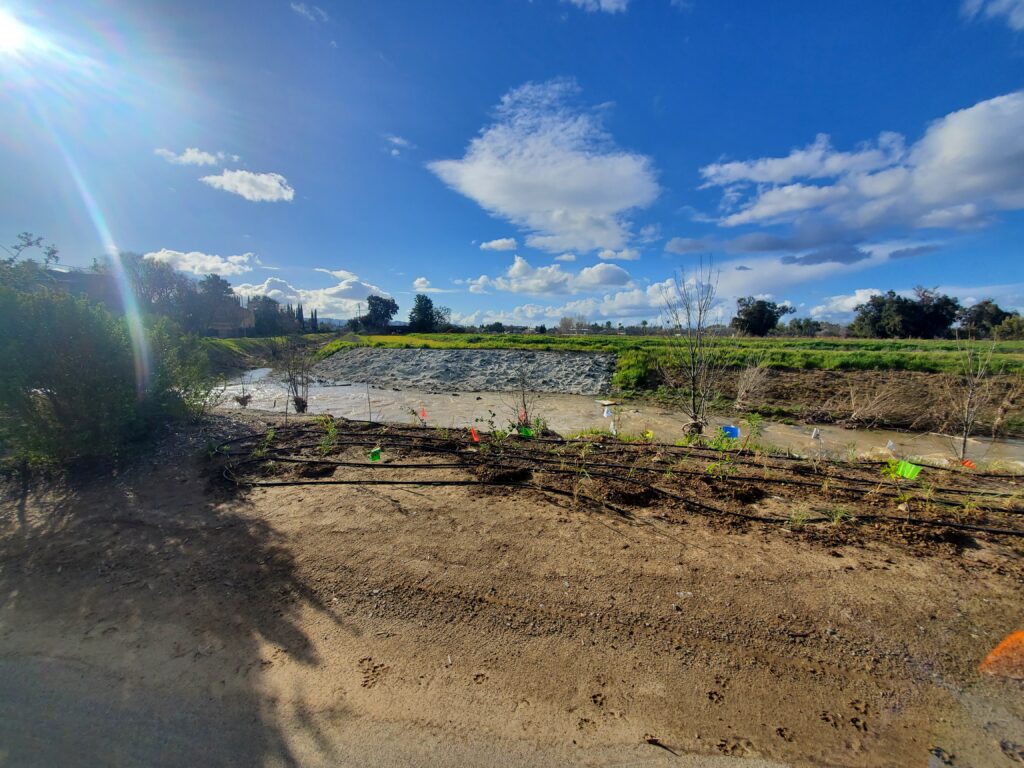
The Three Creeks restoration project in Brentwood, CA. Photo by Alexander Broom
This type of habitat is key to supporting the creek and its wildlife, and the restoration uses modern practices to retain the benefits of flood and erosion control throughout the area.
Next year, the long-awaited Dutch Slough wetland restoration should open to the public. According to American Rivers, Dutch Slough is one of the largest habitat restoration projects in the Delta.
Dutch Slough is where Marsh Creek empties into the Delta.
Protection and Restoration of Upper Marsh Creek
This is where Save Mount Diablo has a chance to make the most impact.
There are already plans to connect the 6.5 existing miles of the Marsh Creek Regional Trail, operated by the East Bay Regional Park District, with Morgan Territory Regional Preserve and Round Valley Regional Preserve.
Save Mount Diablo supports this expansion and is working to protect more land along Marsh Creek.
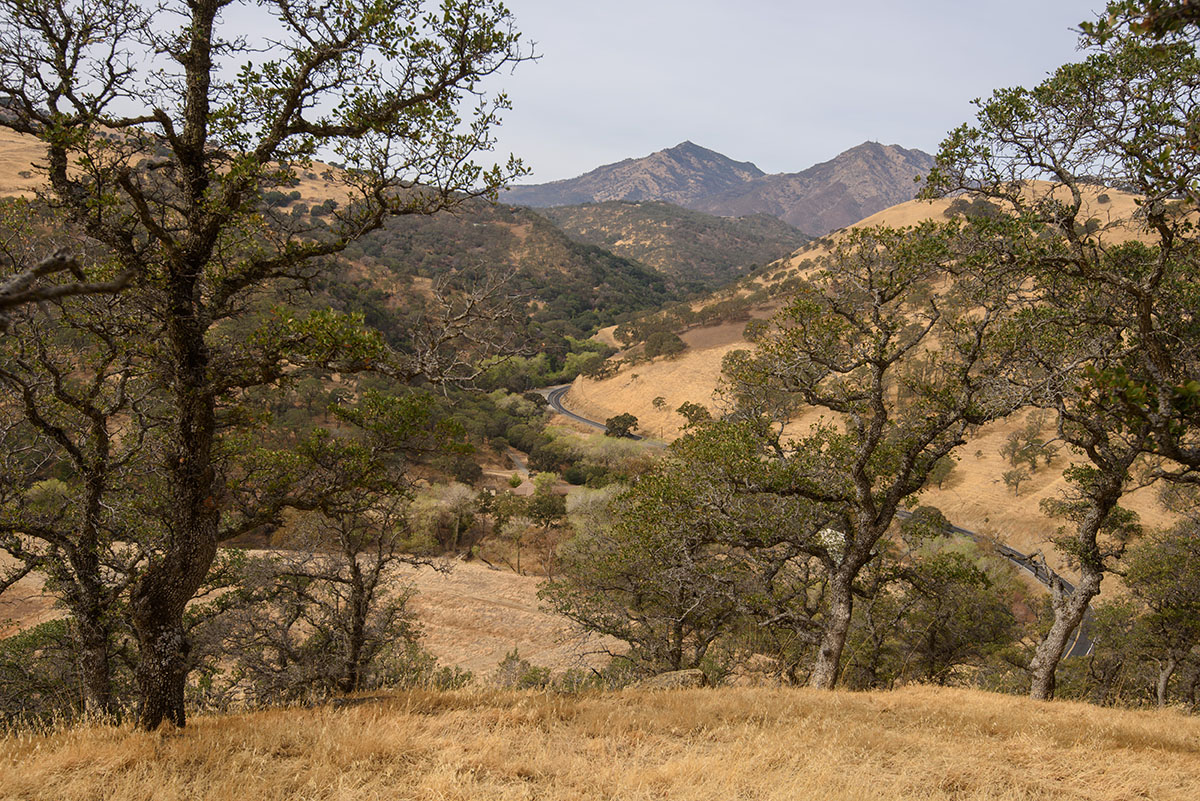
The Hanson Hills property and the Marsh Creek watershed. Save Mount Diablo and its partners have been protecting and reassembling this watershed for decades. Save Mount Diablo purchased the Hanson Hills property and transferred it to the East Bay Regional Park District. Photo by Scott Hein
Our organization already owns or has transferred many properties to the East Bay Regional Park District or other partners along upper Marsh Creek. Some of the properties have been protected with conservation easements.
We are advocating that these lands someday support a trail all the way along the creek.
Eventually, these trails would connect Mount Diablo to the Delta it acts as a beacon for. That dream is many acquisitions and potentially decades away, but the work going on today is making a difference.
So far, Save Mount Diablo and its partners have protected land along 15 miles of Marsh Creek’s 33 miles.
Save Mount Diablo’s Diablo Restoration Team is working on a regular basis to protect the parts of the creek it can. Recently, that meant fencing the creek off from grazing cattle that reduce brush along the creek, at our Marsh Creek 1 and 7 properties.
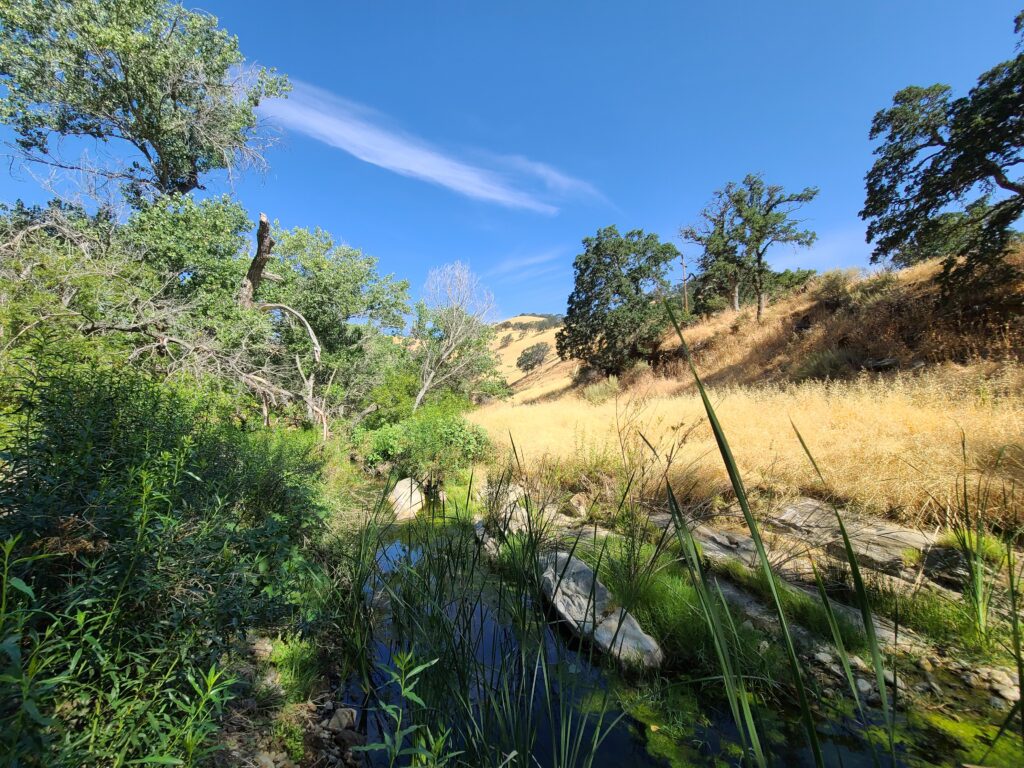
Upper Marsh Creek from Save Mount Diablo’s Marsh Creek 1 and 7 properties. Photo by Alexander Broom
Cattle can disturb the creek and its inhabitants but are very useful for clearing brush.
Additionally, we’re working to restore already damaged riparian and woodland habitats around the creek at many of our Marsh Creek properties. This work feeds from creek restoration projects as well as our 10,000 Trees and Plants initiative.
We’ve been planting native trees like sycamores, oaks, various shrubs, and bunchgrasses at Marsh Creek 1, 4, 6, 7, and 8 (Big Bend) for pollinators and other wildlife.
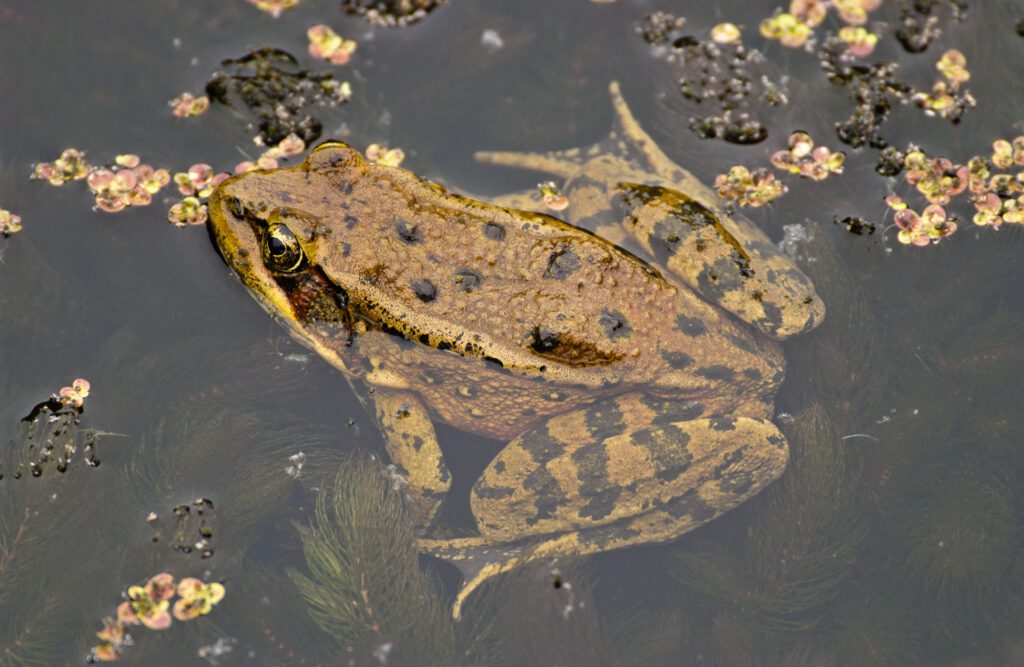
California red-legged frog. Photo by Scott Hein
Marsh Creek is also home to a number of very important aquatic species like western pond turtle, California red-legged frog, Sierran tree frog, California roach (a native fish), and three-spine stickleback (also a native fish).
Western pond turtles are the only native freshwater turtle in California and can live up to 50 years.
California red-legged frogs are known for their distinctive red coloring and were once on the brink of extinction but have been recovering thanks to conservation efforts. They are still federally listed as threatened.
Sierran tree frogs are a type of chorus frog and are highly abundant this time of year, so please watch your step.
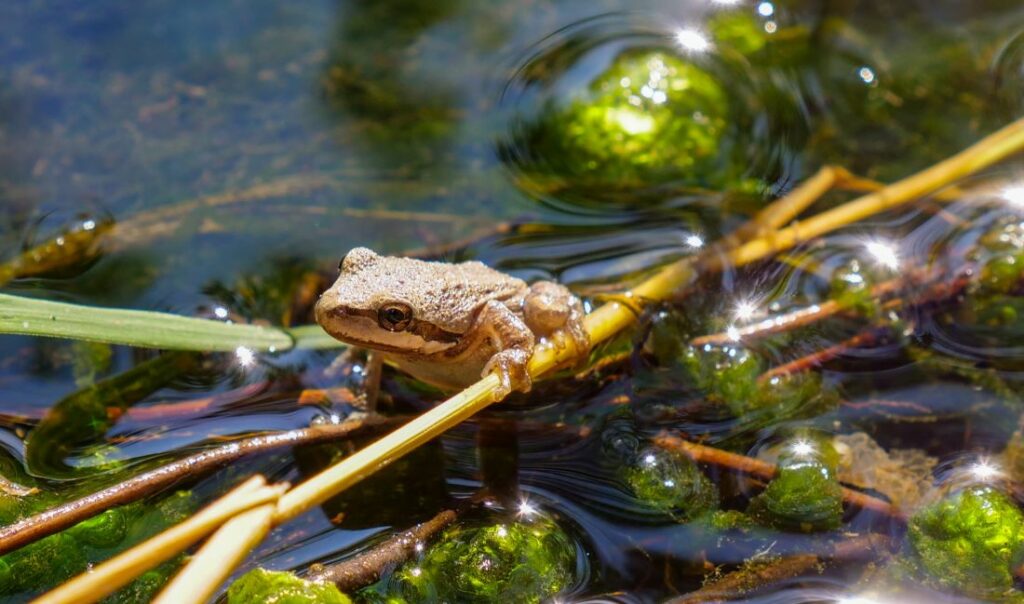
The Sierran tree frog has been seen on Save Mount Diablo’s Marsh Creek properties. Photo by Alexander Broom
California roach (a native fish) are an essential food source for many larger fish species. Similarly, three-spine sticklebacks are known for their distinctive spines on their backs and are essential parts of the food chain.
Save Mount Diablo stewards and volunteers have planted grasses like blue wildrye, sagebrush, and yarrow among others to support wildlife in and around the stream. Some organizations have even proposed bringing beavers back to support the ecosystem.
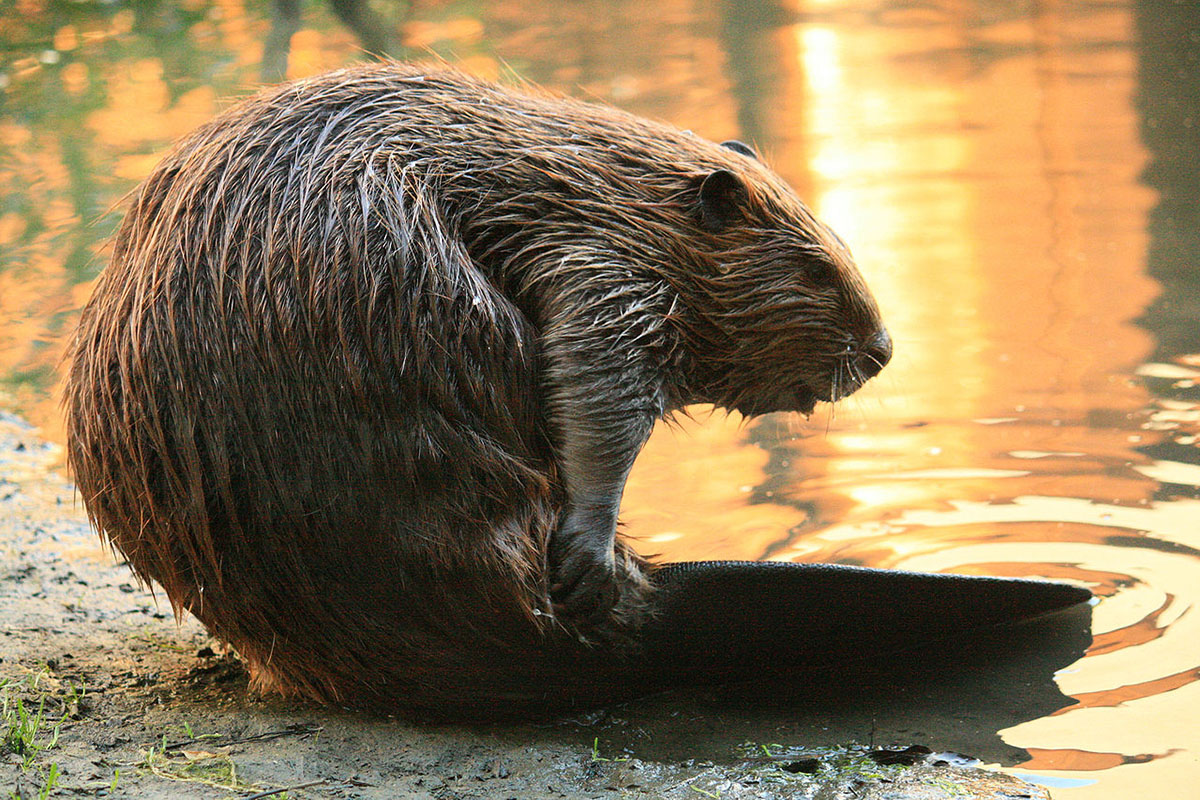
Beaver. Photo by Cheryl Reynolds / CC BY-SA
We don’t quite have the capability to bring the migratory fish back into the upper Marsh Creek, where they would not only spawn but remain in the creek for the end of their life cycle.
These die-offs are critical for maintaining the ecosystem by providing nutrients to the stream.
But someday, salmon and steelhead could make their way upstream up a ladder from the base of Marsh Creek Reservoir, if one is constructed.
If beaver return and help retain more water upstream at places like our Big Bend property, more water will be in Marsh Creek for the salmon.
And if that happens, and the fish are able to migrate onward to the base of Mount Diablo, we will be there to support them.

